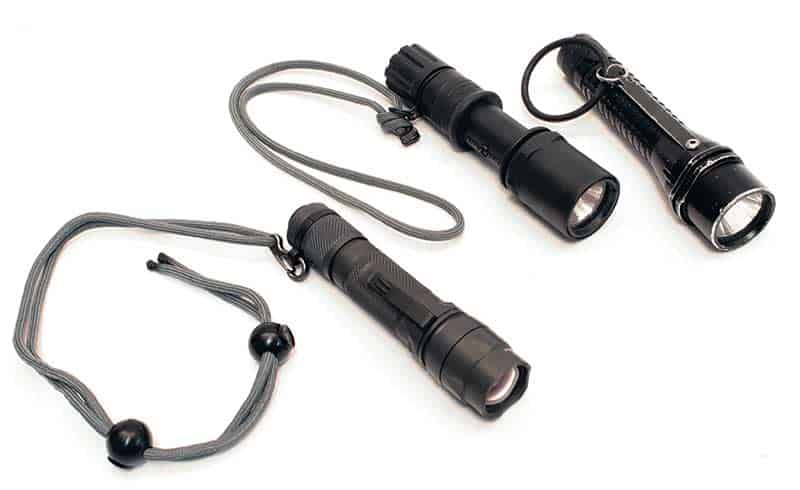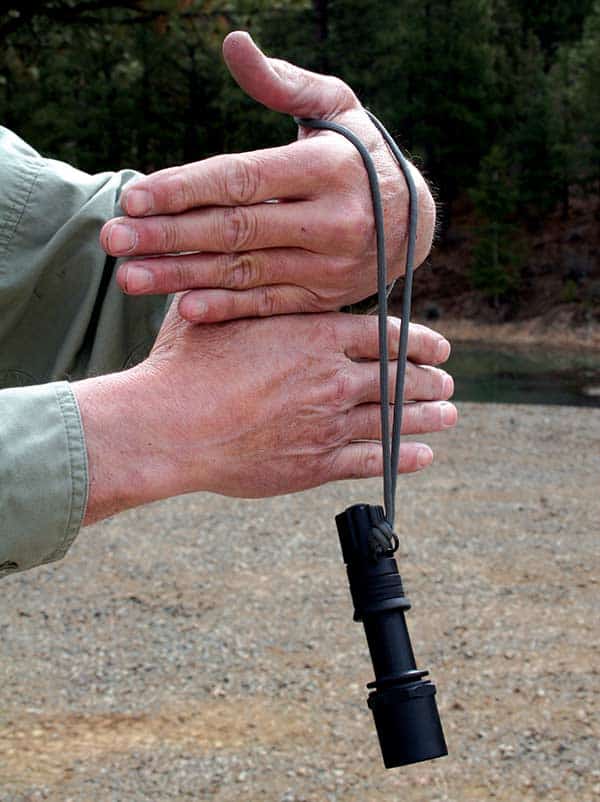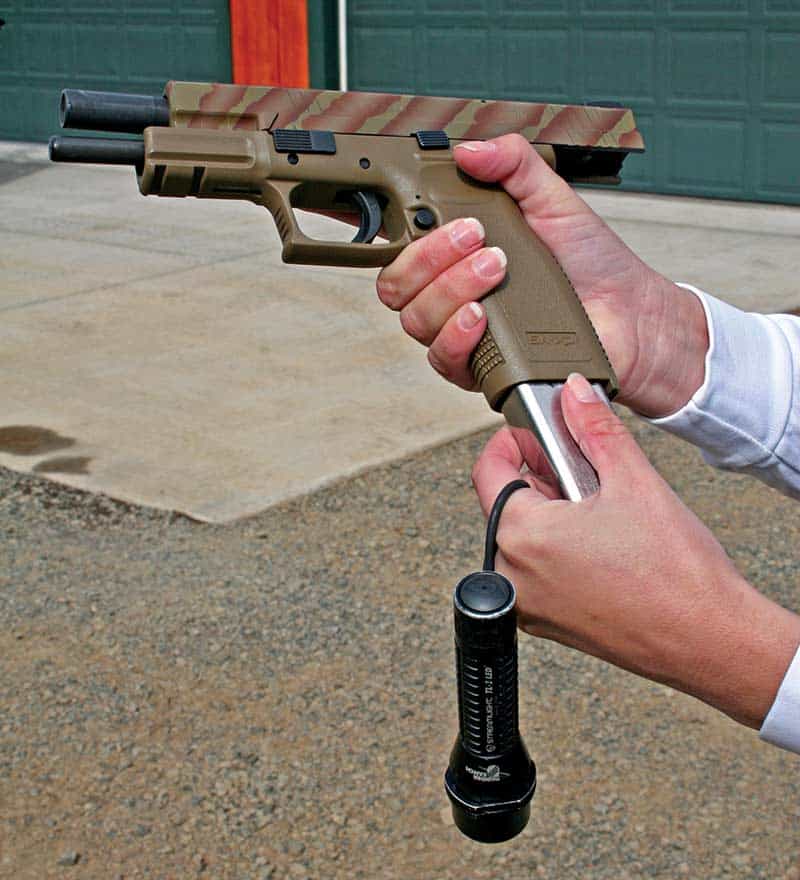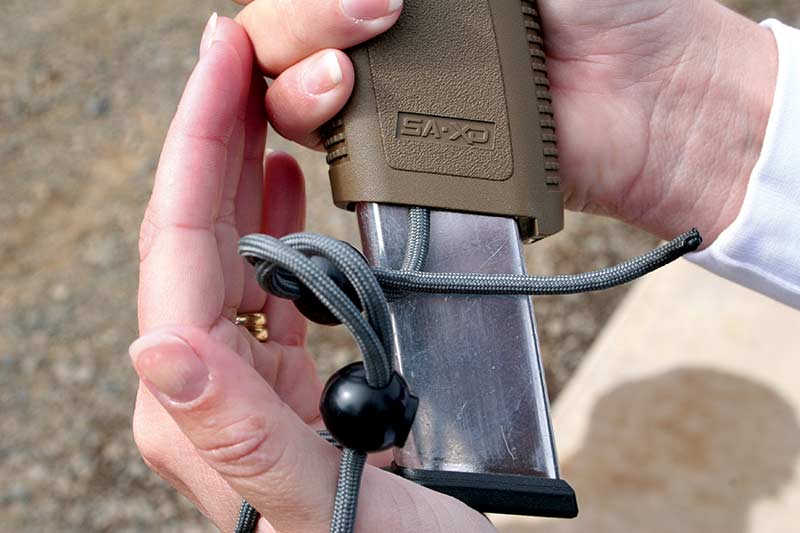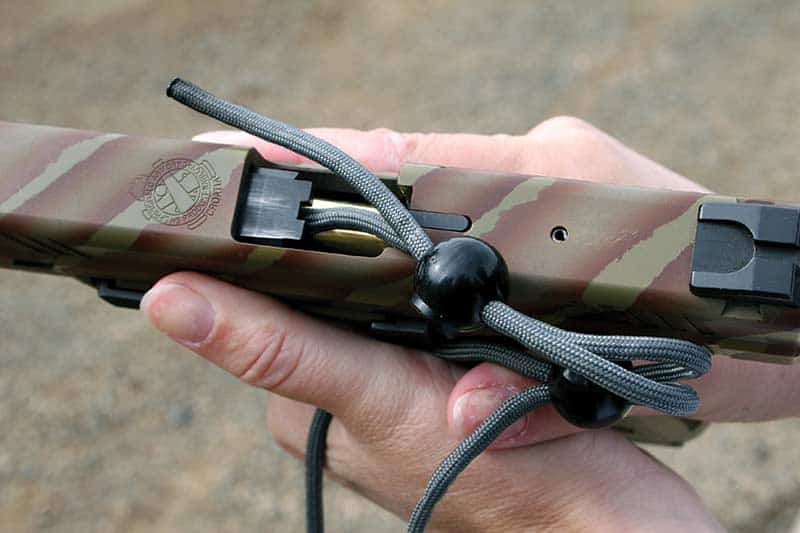Hung By The Lanyard Until Dead
Illumination tools are better than they’ve ever been, and the future looks even brighter — sorry, couldn’t resist. Having been present for the transition from the Eveready plastic light to the high tech lights of today, it’s interesting to see the changes in equipment and techniques. Since I teach low-light techniques almost daily, I’ve seen some odd quirks over the years. If you don’t use a light often, you might pay attention now.
Many lights sold today include a lanyard. Lanyards are historically used on everything from whistles and keys to handguns. Old beat cops used the lanyard on their ever-present nightsticks, and often entertained with magic-like spins and twirls. Most consider the lanyard an asset, and if used correctly it probably is. But without an awareness of what it is, how it should be set up, and potential problems needing to be considered — it can also get you dead.
Typically the flashlight lanyard of today is about 30″ of parachute cord, folded in half with an adjustable plastic keeper. Often there’s a snap hook attaching the lanyard to the light.
The Hanging
I average 120+ tactical runs per month during teaching. Easily two thirds of these are in low-light environments. Often, the uneducated student will wrap the lanyard around their wrists and fingers. Then “Murphy” generally shows-up during loading or malfunction clearing. While in the act of loading or clearing, the rodeo gate opens and the ride begins. Often, the lanyard ends foul the ejection port or mag well during the often frantic manipulations.
Lest you gloat, revolver shooters are not exempt from this danger, as the lanyard ends may foul an exposed hammer during DA firing, or block the cylinder from closing during a reload.
Fix it like this. First ditch the plastic adjustable buttons and the goofy hook — it comes unhooked Make a loop of the lanyard cord so it hooks over your opposite thumb held upright. Stack the strong hand under the opposite and allow the top of the flashlight to touch the bottom of the strong hand. This will establish the length of the lanyard.
You’ll now have a simple loop tied into a square knot, with no tails. The proper length is now set. Hooking the lanyard over your left thumb, the loop will hang over the back of the hand. Simple practice will allow you to move the light into any flashlight firing position. pretty regularly anyway.
An Alternative
Easy — us a rubber “O-Ring” system. Although he probably won’t claim it, as it’s not his style, Tiger McKee showed us a ring system some years ago now replicated in the Streamlight TR Illumination system. Simply, it just does away with the whole “lanyard fouling the handgun” issue.
When acquiring new skills with the O-ring system, people have a tendency to flip the light around, which often sails it across the room. When taught, emphasis is placed on rolling the light in and out of position. End of problem.
It will probably be to your advantage to practice with both a hand-held light as well as a gun-mounted system. With the exception of uniformed cops, you probably won’t keep a light attached to your CCW pistol. Makes sense then to have a hand-held light available. However, for home defense the gun-mounted light is a perfect partner to a hand-held one.
Even though the systems have changed, the concept remains the same. We use the lights to illuminate the path of movement or to confirm potential targets. The light has never shot our opponent — the sights and proper trigger use deliver the thump required. It’s advisable not to saddle a light with a goofy method of transportation. It’d be like mounting a smart bomb on a Piper Cub. Get the light you can afford and mount it with a simple system of a proper lanyard or O-ring. After that, practice, practice, practice.
By the way, this isn’t intended to trash people’s gear. Streamlight, SureFire and others make excellent products. It’s just the lanyards need to be changed — or deleted.
Sorry guys.
Subscribe To American Handgunner

Get More Personal Defense Tips!
Sign up for the Personal Defense newsletter here:

